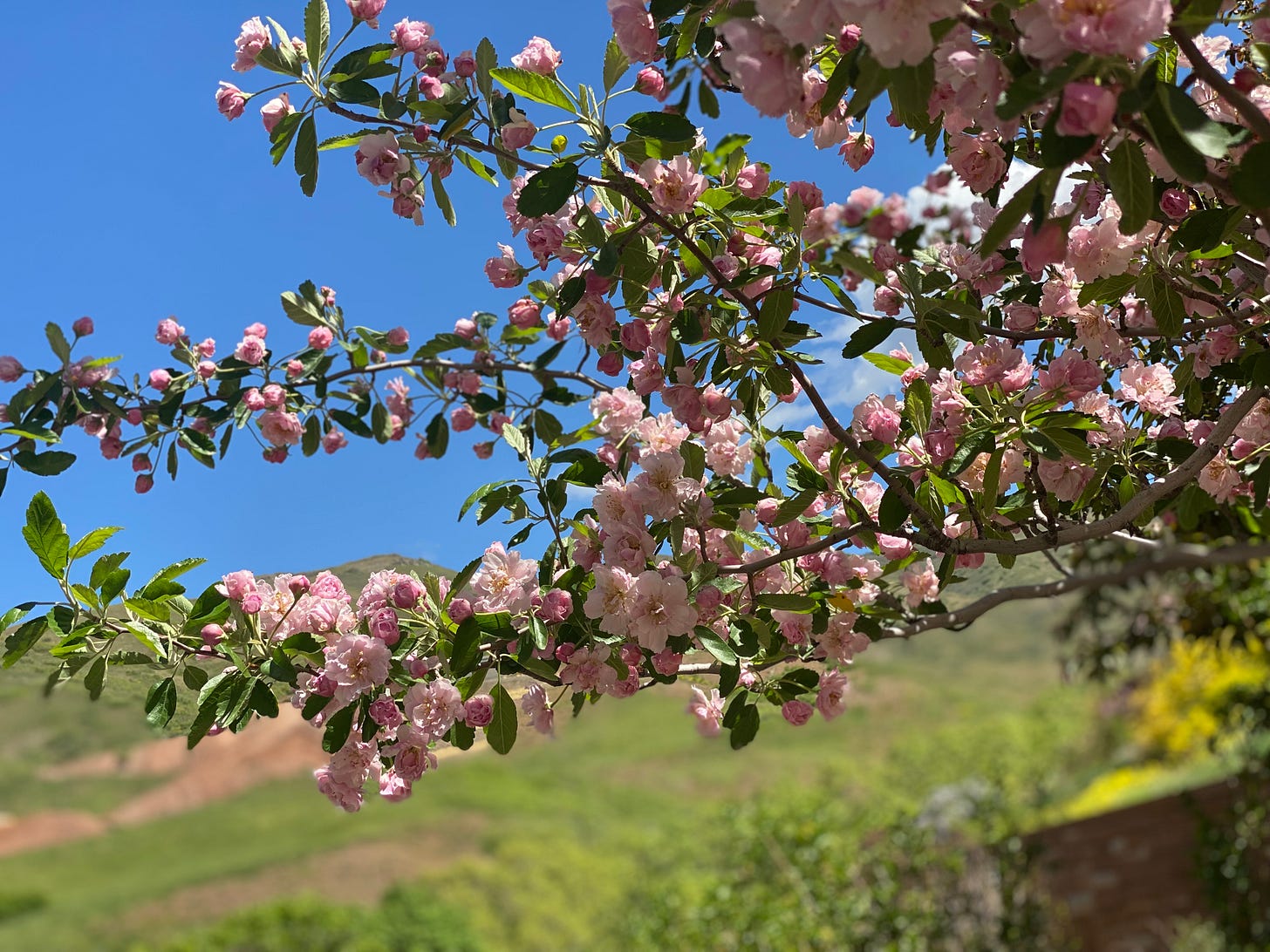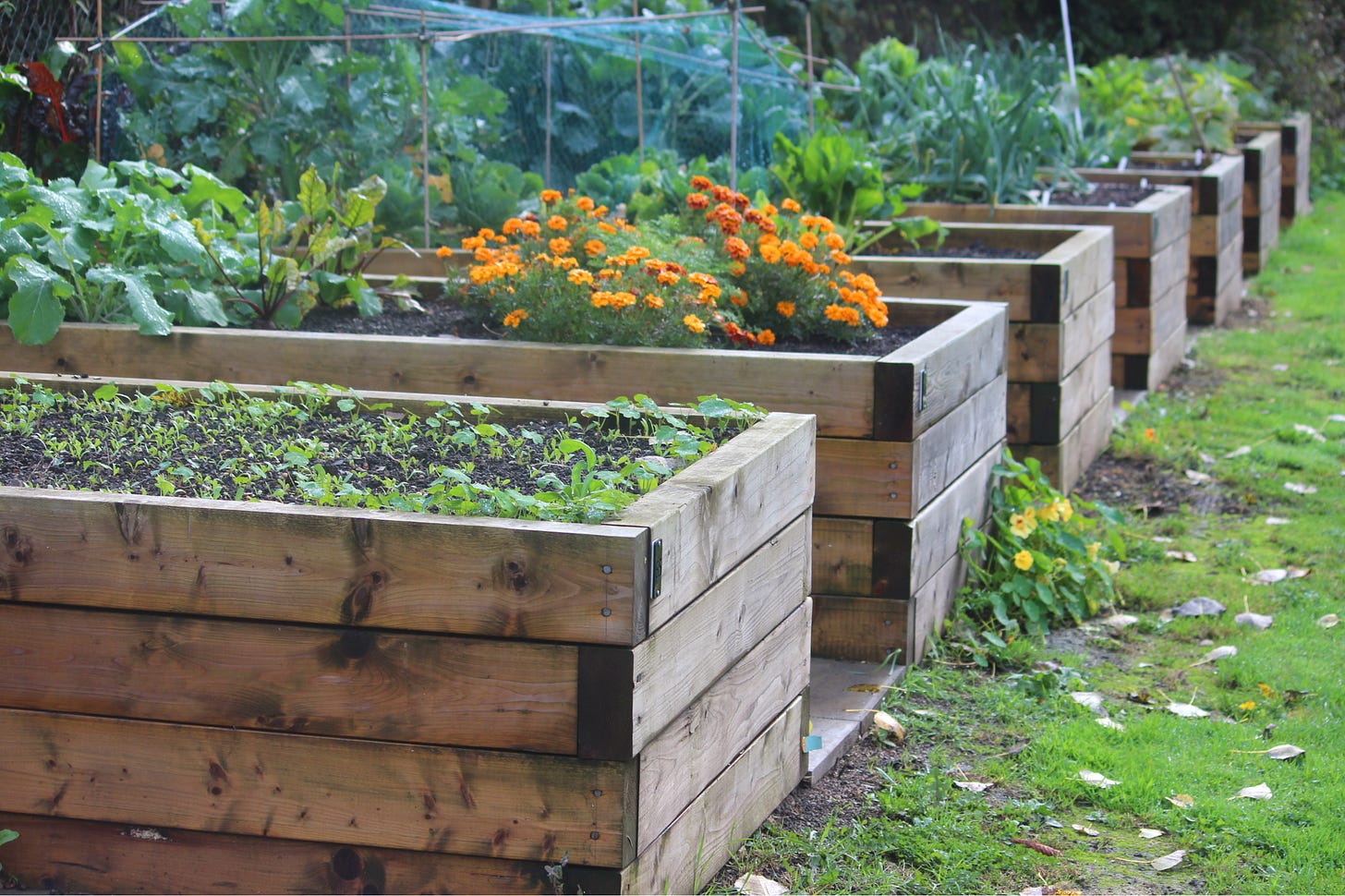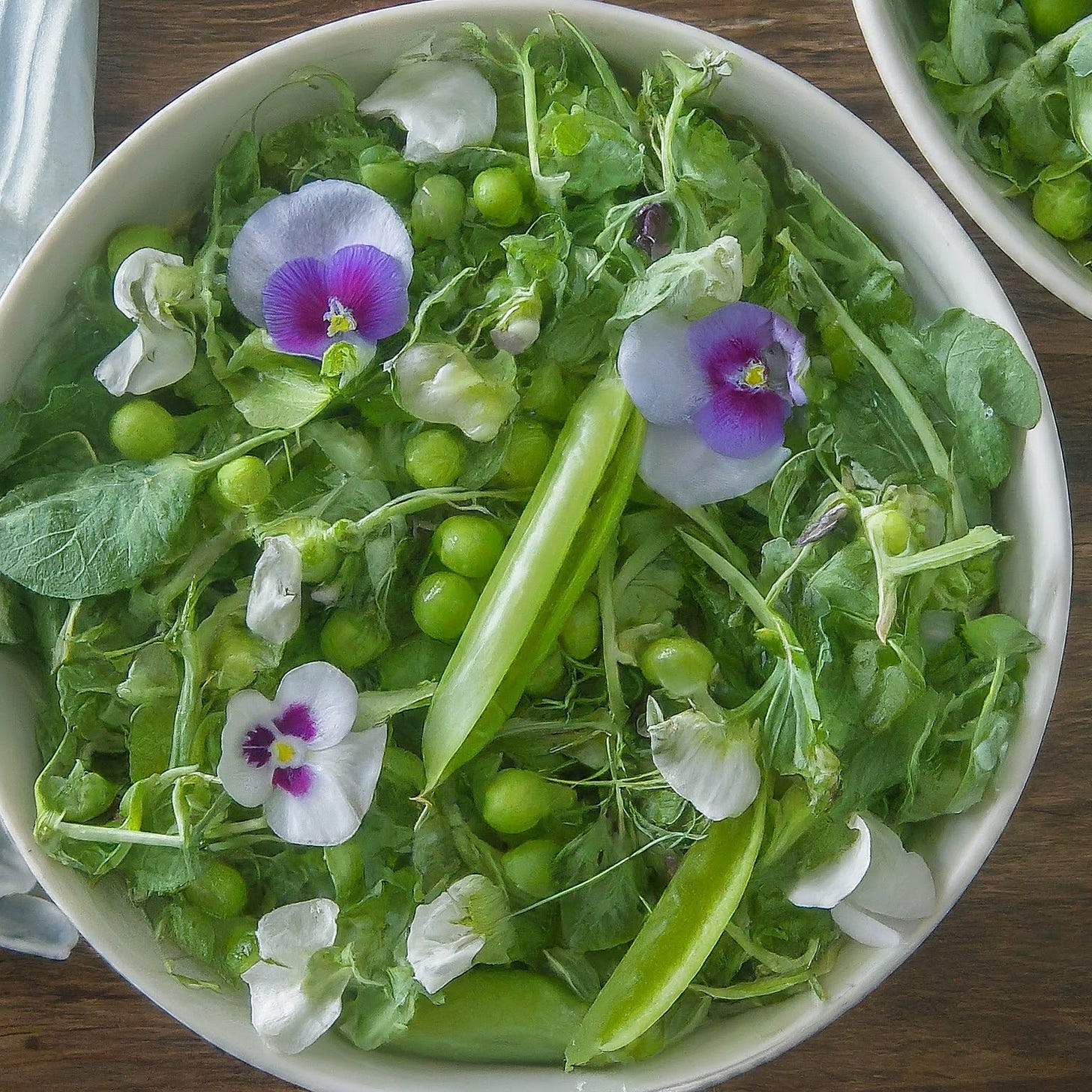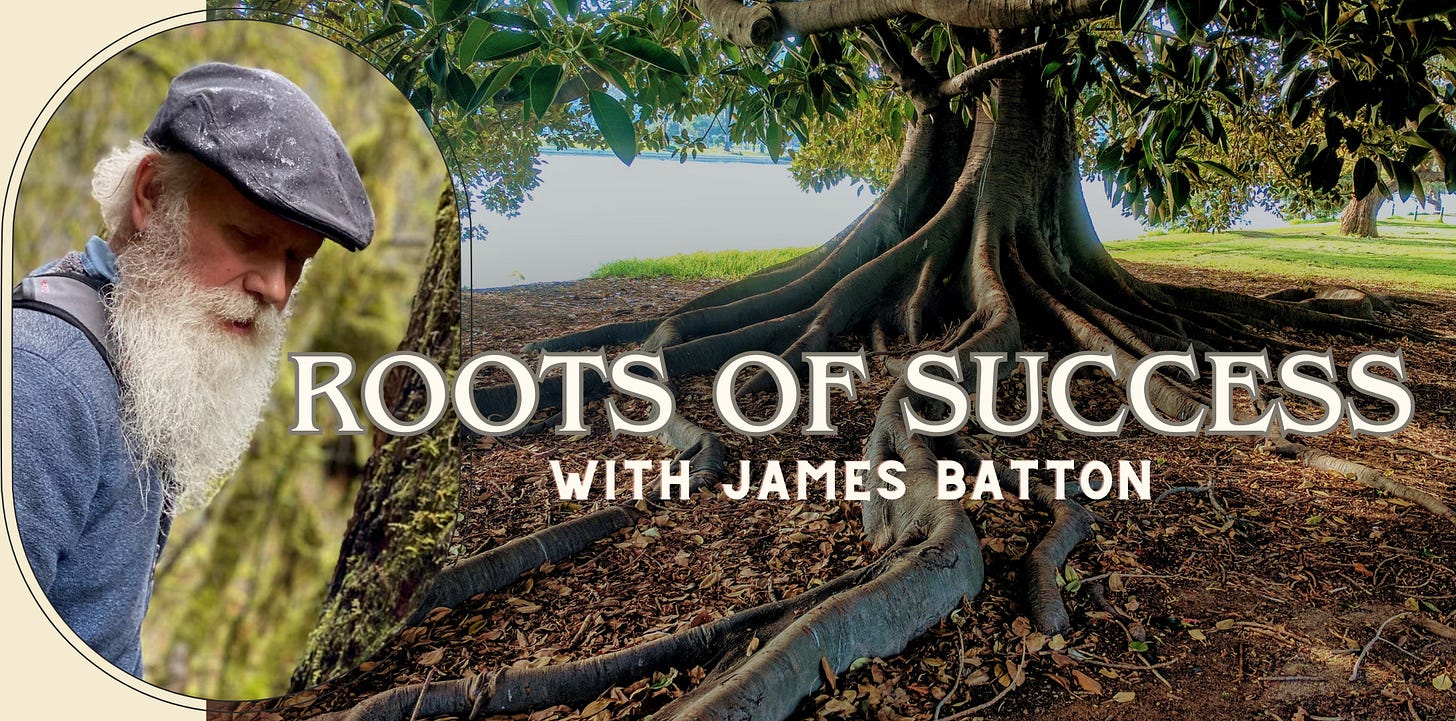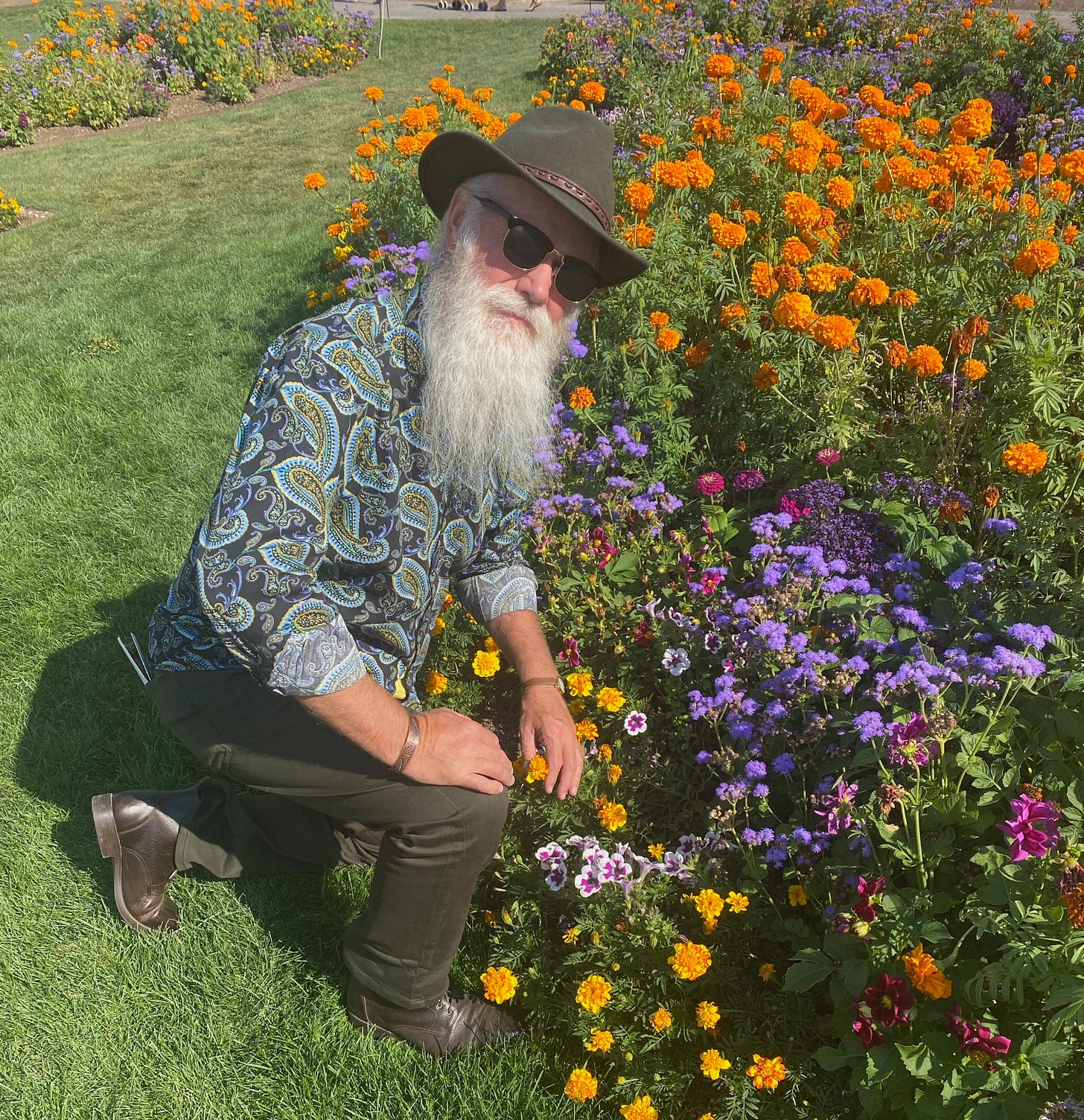Spring is nature's awakening from winter’s long cold days. The days stretch longer, and colors begin to paint the dull landscape with flowers, grass, buds, and leaves. It's a time that pulls us outdoors, casting off the winter's slumber and replacing it with the expectant gardener’s urge to dig our fingers into the earth.
There's a special kind of joy that comes with playing in the garden. It's a return to our connection with nature, a canvas waiting for our creative touch. We are planting seeds that promise a future harvest of beauty, as well as delightful meals.
There is real satisfaction in burying a tiny seed, a mere speck of potential, and witnessing its transformation into a flourishing plant. The delicate act of nurturing seedlings indoors before carefully transplanting them, becomes a promise, even an act of faith for what is to come.
The garden isn't limited to vegetables, though. Planting flowers can be an act of artistic expression. We choose our colors, the tones and textures that intrigue our fingertips, and fragrances that stir our memories. Each bloom creates a vibrant contrast to much of our urban environment, nature’s own act of personal rebellion and resilience.
And for those who dream big, there's the majesty of planting a tree. A commitment that transcends seasons…a gift to future generations. Watching a sapling grow, year after year, is a humbling reminder of the cyclical beauty of nature and the enduring power of hope.
As the wise saying reminds us, we should plant trees under who’s shade we know we may never sit.
So this Spring, slip on your gardening gloves, bask in the warm sun, and step outside. Let the the season fill your senses as you plant the seeds of joy, beauty, and delicious possibilities.
Planting a Vegetable Garden in Utah: A Step-by-Step Guide
Utah's climate is perfect for growing a variety of vegetables, but with its distinct seasons and dry conditions, there are some specific steps to take for success. Here's a guide to get you started:
Step 1: Planning and Preparation
Know your growing zone: Utah has several USDA hardiness zones, which affect what and when you can plant. Look up your specific zone https://www.gardeningknowhow.com/planting-zones/utah-planting-zones.htm.
Decide what to plant: Consider vegetables that thrive in cooler weather for spring and fall planting, and heat-tolerant ones for summer. Utah State University Extension has a helpful planting guide https://extension.usu.edu/yardandgarden/research/wasatch-front-planting-dates.
Pick a spot: Choose a location that gets at least 6-8 hours of direct sunlight daily.
Test your soil: Utah's soil can be alkaline. A soil test kit will help determine if you need amendments like compost or manure to improve drainage and fertility.
Prepare your garden bed: In fall or early spring, clear the area of weeds and debris. Till or turn the soil to a depth of 8-12 inches. Rake smooth and break up any large clumps.
Step 2: Planting
Timing is key: Refer to your planting guide to determine the best time to sow seeds directly outdoors or start transplants indoors.
Planting seeds: Sow seeds directly in the garden bed according to the seed packet instructions for depth and spacing.
Planting transplants: Dig holes slightly larger than the root ball of your transplants. Gently loosen the roots and place the plant in the hole. Fill the hole with soil, firming it gently.
Watering: Water your seeds or transplants thoroughly after planting.
Step 3: Care and Maintenance
Watering: Water your plants regularly, especially during hot, dry periods. Aim for deep watering that soaks the root zone.
Weeding: Regularly remove weeds that compete with your vegetables for water and nutrients.
Fertilizing: Use a balanced fertilizer according to the package directions throughout the growing season.
Pest control: Keep an eye out for common pests like aphids, beetles, and cutworms. Use organic methods like insecticidal soap or neem oil whenever possible.
Step 4: Harvest and Enjoy!
Harvest your vegetables when they are ripe according to variety.
Once you've harvested your vegetables, consider planting a cover crop like clover or ryegrass to protect the soil over winter and add nitrogen for the next planting season.
Bonus Tips for Utah Gardeners
Utilize raised garden beds for better drainage and soil control.
Apply mulch around your plants to retain moisture, suppress weeds, and regulate soil temperature.
Consider using row covers or cold frames to protect your plants from unexpected frosts or extend your growing season.
By following these steps and adapting them to your specific location, you can enjoy a bountiful harvest of fresh vegetables throughout the year in Utah.
Happy Planting!
Spring Recipe: Sweet Pea Salad, with Pea Tendrils, Mint, and Pea Flowers
Ingredients
1 pound fresh sweet peas (4 cups), substitute frozen if needed
1 1/2 tablespoons extra-virgin olive oil
3 medium spring onions (bulbing), or shallots, sliced 1/4 inch thick (3 cups)
Salt
3 tablespoons unsalted butter
3 cups lightly packed tender pea shoots or small watercress sprigs
1/3 cup fresh mint leaves
1 lemon - zested, and juiced
Freshly ground black pepper
1 handful of fresh pea flowers, or edible flowers for garnish
Directions
In a large saucepan of boiling salted water, cook the peas until they are just tender, about 3 minutes.
Drain peas, and set aside.
In the same saucepan, heat the olive oil.
Add the onions, a pinch of salt, and sauté until lightly caramelized and softened, about 5 minutes.
Stir in the peas, cover and cook until heated through, 1 minute.
Stir in the butter, 1 tablespoon at a time.
Remove from the heat and stir in the pea shoots until wilted.
Add lemon juice and zest, stir to combine.
Stir in the mint, season with salt and pepper.
Garnish with pea flowers or edible flowers.
Serve.
In Person Class:
Saturday, April 13 · 10am - 12pm MDT
The Roots of Success: Tree Planting Secrets Every Homeowner Needs to Know
Did you know that healthy roots are the lifeblood of a tree? Just like a strong foundation is crucial for a building, a robust root system is essential for a tree's long-term health and survival. Unfortunately, many tree problems stem from improper planting techniques, leading to issues that can plague the tree for years to come.
This comprehensive course, "The Roots of Success: Tree Planting Secrets Every Homeowner Needs to Know," aims to empower you with the knowledge and skills to plant and care for your trees in the best way possible. By taking this course, you'll gain the confidence to:
Avoid costly mistakes: Learn the essential principles of proper planting, preventing potential problems that may require expensive corrective measures later.
Invest in the future: Proper planting sets the stage for a long and healthy life for your trees, increasing their value and enhancing your landscape's beauty for years to come.
Become a tree champion: Discover the joy of fostering healthy trees, contributing to a greener environment and supporting the well-being of these majestic living beings.
Course Curriculum:
Unveiling the Secrets of Tree Roots
Explore the intricate world of tree roots: Delve into the different types of roots, their functions, and how they contribute to a tree's health and stability.
Understand the impact of root needs: Learn about the vital role of roots in nutrient and water uptake, as well as their influence on the overall health of the tree.
Master the Art of Planting
Planting depth demystified: Uncover the crucial concept of proper planting depth and how it impacts root development and tree health.
Learn about ideal planting conditions: Discover the factors to consider when choosing a planting location, including access to sunlight, soil composition, and potential space constraints.
Step-by-step planting techniques: Gain practical skills in preparing the planting hole, handling the root ball, and properly backfilling the soil to ensure optimal root growth.
Long-Term Care: Nurturing Your Trees for Success
Watering your trees: the delicate balance: Master the art of watering, considering factors like soil type, weather conditions, and the tree's specific needs to avoid overwatering or underwatering.
Mulching – a friend to your trees: Explore the benefits of mulching for healthy root development, moisture retention, and weed suppression. Learn about different mulch types and proper application techniques.
By enrolling in this course, you'll gain the knowledge and skills to become a responsible tree steward. You'll not only invest in the health and beauty of your own landscape but also contribute to a greener and healthier environment for all.
Ready to unlock the secrets of successful tree planting and nurture thriving trees for years to come? Register for this course today and embark on a rewarding journey into the world of tree care!
Saturday, April 13 · 10am - 12pm MDT
In Person Class:
Red Butte Garden - Tuesday, June 11 · 6:30-8:30pm MDT
YOUR LANDSCAPING 101: WELCOME TO UTAH
Embarking on the journey of landscape gardening in the picturesque state of Utah is not just a gardening endeavor; it's an immersive and distinctive experience that sets it apart from many other regions in the United States.
As new homeowners take their first steps into the captivating landscape of Utah, the key to a flourishing outdoor space lies in delving into the intricacies of the state's climate, soil composition, microclimates, and embracing best practices tailored to its unique conditions.
This immersive learning experience is designed to equip you with a profound understanding of Utah's natural intricacies, enabling you to make informed decisions about plant selection, soil management, and sustainable gardening practices.
By the end of our course, you'll emerge not only as a gardener but as a steward of Utah's unique and captivating outdoor spaces. Join us as we embark on this journey together, cultivating thriving landscapes in the heart of Utah's natural beauty.
About James:
James Batton is an expert horticulturist and tree consultant, diagnostic arborist, award winning garden designer, writer, public speaker, Red Butte Garden instructor, published author, and YouTube host.
Since 1979 James has worked in the landscape gardening field as a research assistant, estate gardener, greenskeeper, landscape and garden designer, certified arborist, and horticultural instructor. He has served as president of the local chapter of The International Society of Arboriculture, and consulted on many projects including the City Creek Landscape, Thanksgiving Point waterfall features, and the Oregon Symphony designer’s show-house.
Come enjoy James' engaging storytelling style of teaching skills in the garden. Stay connected with his vibrant community by subscribing to this weekly newsletter, where James continues to spread his passion for life, gardening, and the rejuvenating power of nature.

